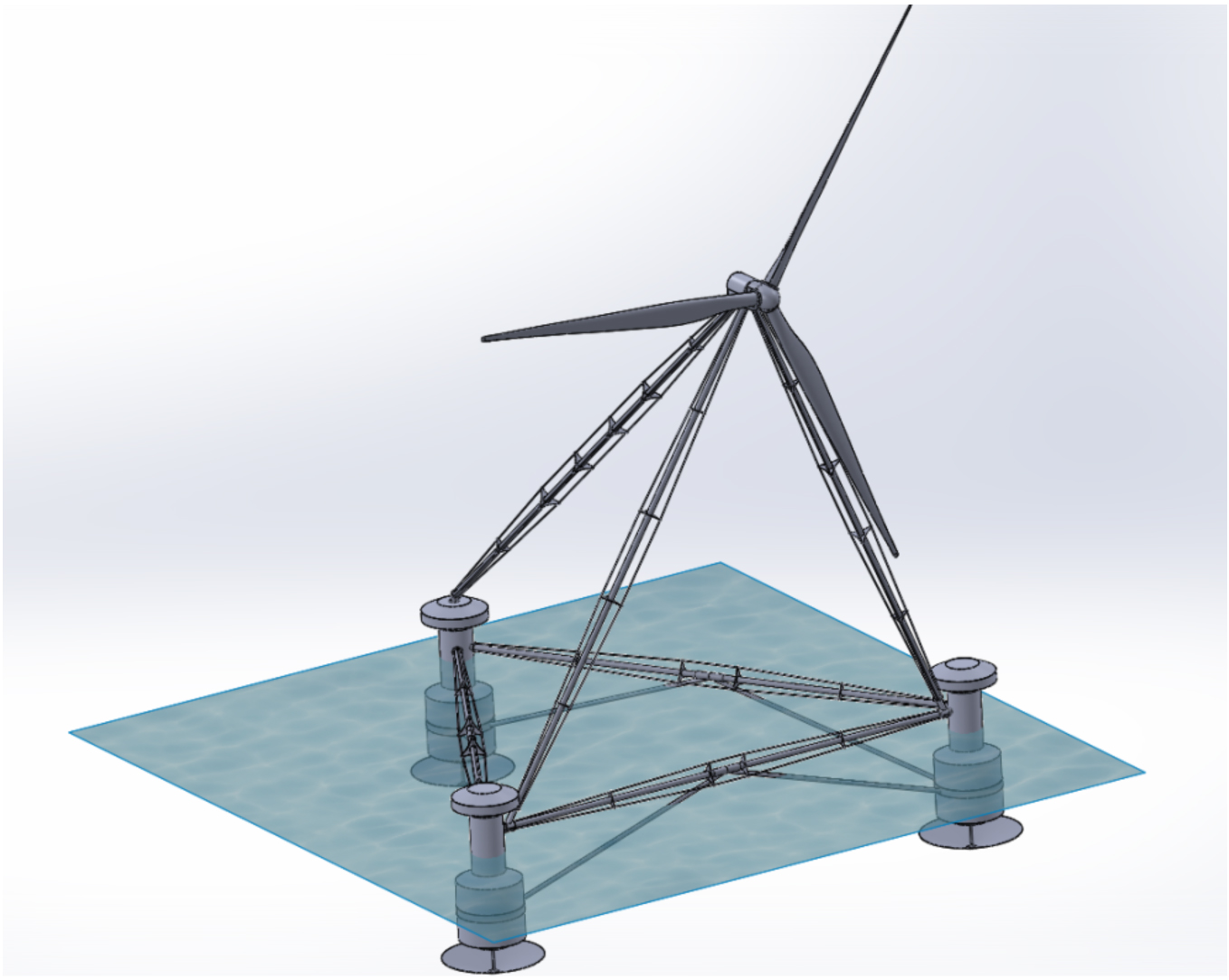For offshore applications of WindTP, it is unattractive to have hot gas or cold gas travelling long distances below seawater. This supports having a floating arrangement where either: (a) a group of wind turbines is mounted on a single floating platform following any one of several such designs that have already been proposed or else (b) a single very large wind turbine on a floating platform.
Floating platforms are especially relevant for WindTP offshore because they offer the potential that the entire platform can yaw above the surface of the water. This has two advantages: (i) the major wind loads on the platform are always applied in the same direction relative to the platform itself and (ii) yaw bearings are not required for the individual wind turbines. Obviously, these floating platforms do require a swivel-joint that can transmit electrical power through it as well as the downwind thrust force generated on the wind turbines.
A paper presented at the OSES2015 conference described one possible floating wind turbine arrangement where a 10MW wind turbine supported on a tetrahedral floating platform structure could store 1GWh of electricity (equivalent to 100 hrs of rated output power from the turbine). The paper is available here.
The 10MW wind turbine itself together with the main steel structures above the water level would consume something in the order of 1,500 tons of steel (the structure is very light because no element has to react a large force through pure bending). To store the 1GWh of energy, this design requires 15,000 tons of rock in the hot-store and 15,000 tons of rock in the cold-store. Although this sounds large at first, 15,000 tons of water is displaced by a cylinder of diameter 26m and height 28m. Since the turbine itself would be supported approximately 120m above the water surface, these dimensions are not disproportionately large. For comparison purposes, note that the largest pumped hydro plant in the UK (at Dinorwig in Wales) stores only 10GWh and it raises 6 million tons of water through 600m to store its 10GWh (600,000 tons of water per GWh).

